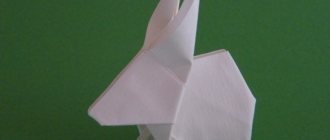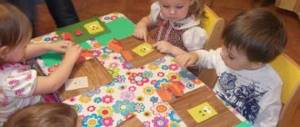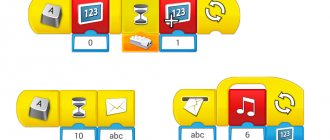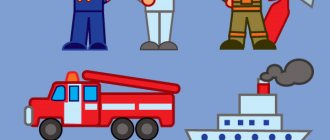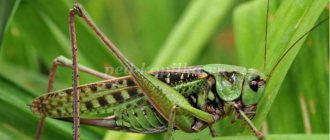LiveInternetLiveInternet
Quote from Tatyana57
Read in full In your quotation book or community!
SPEECH DEVELOPMENT. LEXICAL TOPIC "TRANSPORT".
CHILDREN SHOULD KNOW OBJECTS: car, transport, bus, metro, tram, trolleybus, train, plane, ship, helicopter, boat, truck, driver, pilot, captain, traffic rules, garage, parking, stop, sidewalk, rails, road , rocket, controller, conductor, station, airport, port, pier, airfield, wheel, steering wheel, door, glass, headlights, hood, trunk, pump, driver, boat, ticket, rails, sleepers, rocket, train, dump truck, taxi , cart, bicycle, motorcycle, tractor, combine, subway, accident. SIGNS: land, water, air, horse-drawn, fast, ambulance, jet, passenger, passenger, cargo, ambulance, fire, cleaning, railway, city, country roads, tram, trolleybus, bus stop, underground, river, sea, snow removal, police ACTIONS: drive, sail, fly, honk, stop, turn, transport, stand, repair, repair, break, cast off, take off, land, brake, start, skip, taxi, skid. CHILDREN SHOULD BE ABLE TO NAME IN ONE WORD: The milk truck carries milk. The concrete is being stirred by a concrete mixer. Transports cement - a cement truck. Carries water - a water carrier. SELECT VERBS: Bus - travels, carries people, turns, slows down.. Ship - sails, sails, docks... SELECT AN OBJECT TO THE FEATURE: Old - ... New - ... Freight - ... High-speed - ... DESCRIBE TRANSPORT ACCORDING TO THE PLAN: Name What it consists of ( what is above, below, side, front, back, inside)? What is it intended for? What actions does it perform? Compare two types of transport. What are the similarities and what are the differences (according to the description plan).
TRANSPORT - a set of means of transportation (trains, ships, cars, etc.), as well as a separate type of these means.
Railway, passenger, water transport. Work of urban transport. Types of transport: land (rail, city), underground, air, water. Ground transport: a) railway: train (cars, steam locomotive, diesel locomotive), electric train. b) urban: passenger car, trucks (truck, dump truck, van, tank), bus, trolleybus, tram, bicycle, motorcycle, scooter, special vehicles (ambulance, fire, police, emergency, taxi). Underground transport: metro. Metropolitan is a city electric road, usually underground. Air transport: balloon, plane, helicopter, rocket, spaceship. Water transport: boat (motor, rowing, with a sail, underwater), cutter, steamer, ship, barge, icebreaker, motor ship, raft. TYPES OF TRANSPORT: freight and passenger. Cargo - goods, things that are transported somewhere. A passenger is someone who is traveling or intending to ride something. PARTS OF TRANSPORT: headlight, body, cabin, engine, wheel, doors, tires, trunk, steering wheel, seat, pedals, brake, tail, propeller, gangway, salon, cabin, deck, mast, sides, stern, hold, lifebuoy, porthole. TRANSPORT MANAGEMENT AND ITS MAINTENANCE: driver, carriage driver, driver, chauffeur, motorcyclist, cyclist, captain, pilot, pilot, helicopter pilot, flight attendant, navigator, controller, passenger, sailor, astronaut. PLACES OF TRANSPORT AND PEOPLE USING IT: station, airport, airfield, helicopter station, pier, port, garage, trolleybus depot, bus depot, space, depot. QUESTIONS FOR CONVERSATION: 1. What kind of transport is there? a) What is the name of a vehicle that floats on water? b) Moves by rail? c) Moves on the ground? d) Underground? d) Does it fly through the air? 2. Name (list) ground (railway, city), underground, water, air transport? 3. What types of cars do you know? (truck, passenger, special). 4. What types of trains do you know? (passenger, freight). 5. What types of aircraft do you know? (passenger, military). 6. What types of boats do you know? (motor, rowing, sailing, underwater). 7. Show and name the parts of machines? (wheels, cabin, body, headlights, steering wheel, doors). 8. Show and name the parts of the boat? (mast, sail, oars, etc.). 9. Show and name the parts of the ship? airplane? 10. Who controls a car, plane, ship, train, tram, motorcycle, etc.? (driver, pilot, pilot, captain, engineer, etc.). 11. What professions involve driving? 12. What should a driver, driver, engineer, captain, etc. be like? (attentive, polite, courteous, neat, strict, efficient, etc.). 13. Do you like driving? 14. What kind of transport do you have at home? 15. Would you like to become a driver of any transport? 16. Tell me, what transport do you use to get to kindergarten? 17. How far did you leave home and what did you use? PUZZLES. A house is driving along the asphalt, there are a lot of children in it. And there are reins above the roof; he cannot walk without them. (trolleybus) Very early outside the window there was knocking, ringing, and chaos. Red houses run along straight steel paths. (tram) A steam locomotive without wheels, that's a miracle - a steam locomotive. Has he gone crazy - walked straight across the sea? (steamboat) Doesn’t flap its wings, but flies, Not a bird, but overtakes everyone (airplane) Rushes and shoots, grumbles in a patter The tram can’t keep up with this chatter (motorcycle) So I can take you, I don’t need oats, Feed me gasoline, for my hooves give some rubber, And then, kicking up dust, it will run... (car) What a miracle - a white house, there are a lot of children in it. Wears rubber shoes and eats gasoline (bus) DIDACTIC GAME “SAY A WORD” The word is hidden somewhere. The word is hidden and waiting. “Let the guys find me. Well, who will find me?” The house on rails is right there. He'll kill everyone in five minutes. You sit down and don’t yawn - It leaves ... (tram) It won’t go without gasoline Neither a bus nor ... (a car) It rides on two wheels, It doesn’t skid on slopes, And there’s no gasoline in the tank - This is my ... (bicycle) Early in the morning along the road Dew glistens on the grass. Legs move along the road and two wheels run. The riddle has an answer. This is my... (bicycle) I don’t look like a piano, But I also have a pedal. Whoever is not a coward or a coward, I will give him a dashing ride. I don't have a motor. What's my name? ... (bicycle) Runs quickly in the wind Without oars and a motor ... (sailboat) I'm called a dump truck, I myself dump ... (load) Feed me gasoline, Give me rubber for my hooves, And then, raising dust, Runs .... (car) Clinging to the rear tire, Mishka rides on... (car) The whole world read the message in the newspapers that Belka and Strelka Flew in... (rockets) Soars up without acceleration, reminds me of a Dragonfly. The rotorcraft takes flight... (helicopter) There is silence in this house, Many windows, one door. The house flies into the sky. The whole country is outside the window. The house took flight. So this is... (plane) Past the grove, past the ravine, The little sister steam locomotive rushes without smoke, rushes without steam... Who is she? ... (train) The driver was taking him to the store. There were a lot of brooms and baskets. How pleasant it was for Zina to sit with him in ... (cockpit) I began to create a fleet. The sponge turned into... (raft) There are no clouds on the horizon, But an umbrella opened in the sky. A few minutes later, Descended... (parachute)
Summary of GCD in the senior group “Modes of Transport”
Summary of GCD in the senior group.
Topic: “Types of transport. Professions of people working in transport."
Program content
: - expand children’s understanding of the classification of modes of transport depending on the environment of movement and destination;
-continue to formulate concepts: ground, air, water; cargo, passenger, special;
- consolidate knowledge about the professions of people driving vehicles; -develop the mental and speech activity of children using visual modeling technology.
Activating the dictionary:
Conscientious, hardworking, diligent, polite, responsible, courageous, skillful, vigilant, disciplined; water, air, land, underground, passenger, cargo, special, names of transport professions.
Equipment:
— Handout subject pictures depicting a variety of vehicles. -Canvas “Sky – earth – water”. -For modeling: circles symbolizing modes of transport (blue – air; black – ground, underground; blue – water) – with a diameter of 15-17 cm; circles - symbols of modes of transport depending on the purpose (yellow - passenger, brown - cargo, red - special, rescue) - with a diameter of 5-6 cm.
Preliminary work:
-Examination of subject and plot pictures on the topic “Transport”, conversations on them. -Observing transport while walking. — Excursions “Journey to the land of road signs”, “Cars on the streets of our city”. -NOD “Road rules are reliable rules.” — Selection of a library and creation of a card index of poems and riddles about transport. — Creation of a corner of educational games on the theme “Transport”: puzzles, board games (“Assemble a car or plane,” “Fix the equipment,” “What’s extra,” cut-out pictures “Transport”) — Director’s game “Dispatcher” using sets of different pictures types of transport. — Coloring pictures with pictures of vehicles. — Exhibition of children’s crafts made from natural and waste materials together with parents on the theme “Transport.”
GCD move:
Educator
reads a poem: “The train is moving, the train is rushing, its wheels are knocking.” A river flows under the mountain, and there is a steamboat on the river. A car is driving along the highway; it has large tires. A plane rushes into the sky, inviting all its friends to fly. He carries cargo and people, what is this - tell me quickly?
-What do you think we will talk about in class today? Yes, that's right, about transport. What is transport? (This is something you can use to move around and transport cargo). Game
"Flies, swims, rides." (
Game task: to consolidate in the minds of children the idea of types of transport according to the environment of movement.)
- Listen to the rules of the game. I will ask riddles about transport, and you must think and guess them correctly. Riddles-pictures are on your tables, the answer must be attached to the canvas “Sky, earth, water” ( Riddles about
a bus, train, truck, subway, plane, helicopter, rocket, boat, motor ship, submarine
) - There are different types of transport: -What's floating?
Boat, cutter, yacht, sailboat, ship. - What's going on? Bus, bicycle, car, truck, train, motorcycle. - What flies? Rocket, airplane, helicopter, airplane, airship. Educator:
- What is the name of a vehicle that moves on water? (Water transport). What is the name of a vehicle that moves through the air? (Air transport) - What is the name of transport that moves on the ground? (Ground transport), underground? (underground)
Each type of transport will be designated by different colors (the teacher attaches large circles to the board): blue - air, black - ground, underground, blue - water.
Didactic game
“Confusion”
1) We fell in love with air transport, 2) Cars fly faster than all birds. 3) Doctors take us all to work in the morning. 4) We flew to the Black Sea in May by tram. 5) Today we were brought to kindergarten in a car - just great! (Children point with their hands and answer in unison: yes, yes...... no, no)
Educator:
— Think carefully and answer, why do people need transport?
(Children's answers). — Cars were invented and made by people to make their work easier, to move long distances themselves and to transport heavy loads. To operate a machine, you need to know a lot. — What do you think is how machines can work and move? (Children remember details of an airplane, car, helicopter, train). ( exhibited: airplane, helicopter, truck, train, trolleybus, motor ship)
Didactic game
“What would have happened?”
What would happen if...the car's doors disappeared (the car is rushing at high speed). ...gas tank gone? ...the headlights are missing? (at night, in the fog.) ... would the bicycle lose its pedals? ... the plane's wings disappeared ... the seats in the cabin disappeared? ... the excavator has lost its bucket? ... the truck body is missing? ... the boat's oars are missing, and the boat is in the middle of the lake?
Educator: -
We found out: in order for a car to move, it needs a motor, gasoline... and what else? After all, she won’t go on her own! (Children's answers....) - Of course, we need a person to drive the car, but what is this person called?... Driver. Let's remember the professions that are related to the management of vehicles?
(Children's expected answers: Driver - drives a car, conductor - distributes tickets for travel, auto mechanic - repairs cars, taxi driver drives a taxi, tractor driver works on a tractor, crane operator on a crane, etc.). -What should these people be like? ( attentive, brave, etc.)
All the roads are familiar to me, I feel like I’m at home in the cabin. The traffic light is flashing for me, He knows that I am... (Children's answers).
-Yes, this is the driver. The driver or, as he is also called, the driver. What qualities do you think a good chauffeur or driver should have? What should he know and be able to do? (Children's answers) But the most important thing is that the driver must know the traffic rules very well, because the safety of both passengers and pedestrians on the roads depends on this. It is very important!
-What is the name of the person who flies the plane?: The man who flies the plane is called a pilot. -Pilot, or pilot. What is a pilot flying a plane like? He must be brave, courageous, skillful. By analogy, we find out who controls different types of transport: train, ship, rocket, bicycle.
Game
“Name the profession”
Who drives a bus or a car? (attentive driver) Who flies on an airplane? (brave pilot) Who controls the train? (sharp-eyed driver) Who flies the rocket? (skilled astronaut) Who controls the ship? (conscientious captain) Who rides a motorcycle or bicycle? (brave motorcyclist, disciplined cyclist) Who flies a helicopter? (responsible pilot).
Physical education lesson:
-
Imagine, guys, that we are traveling on various types of transport, now we will depict it.
The pilot and I will fly. Hands to the sides, we send the plane into flight. Left wing forward, right wing forward, One, two, three, four - our plane flew. By car we drive fast, fast, (hands hold the steering wheel, turn the steering wheel) The train rushes at full speed (arms bent at the elbow, train movement) Chuh-chuh-chuh-chuh! We take the oars in our hands and quickly row towards the shore. A boat has landed on the shore. We will jump onto the shore deftly. And let's jump across the lawn Like bunnies, like bunnies.
Educator
: — Transport is used for movement on land, water, air, for the transport of passengers and cargo.
Can we divide ground transport into groups depending on its purpose? (Children's answers...) Teacher
(sums up the children's answers): - Yes! Transport can be: passenger, cargo, special. Children, at the teacher’s suggestion, independently reveal the purpose of each of these types of transport and name the vehicles (at the same time, the children’s answers are translated into a diagram by the teacher):
-Passenger transport is busy transporting passengers, i.e. people: buses, trams, trolleybuses, taxis, trains, planes, sea liners, etc. -Cargo – transports cargo: trucks, freight trains, airplanes, ships, etc. (the explanation is accompanied by showing illustrations and photographs of transport). — Special transport is needed for very important work. They are called by telephone if urgent assistance is required: a fire truck, an ambulance, a police car. What phone numbers are dialed in case of a fire? Sick? What if something happened?
Air and water transport are also divided into types according to purpose. The diagram is drawn up as follows: for each large circle, indicating the type of transport depending on the medium of movement (black - ground, underground; blue - air; blue - water), smaller circles are attached (yellow - passenger, brown - cargo, red - special, rescue )
Didactic game
“4th extra”
(Working on cards - mutual testing in pairs): consolidating and testing children’s knowledge on the topic).
Summing up the lesson using the diagram.


